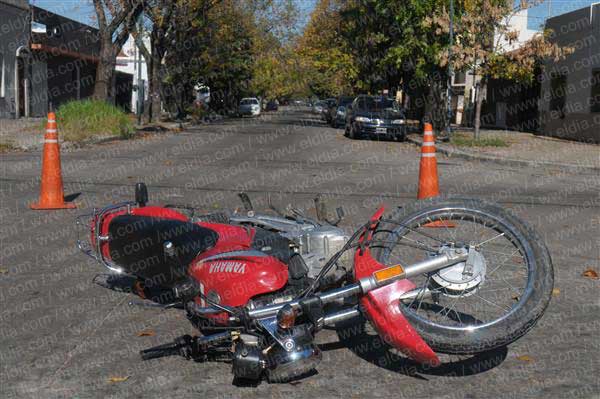Motorcyclists death increased by 227% in Latin América .
- Details
- Created: Tuesday, 12 November 2013 16:08
Millions of motorcycles circulate daily through the congested streets of major cities in Latin America, where the use of this means of transport is growing almost as fast as their victims.
The motorcycle related deaths in the region increased by 227% in 12 years, from 3,209 in 1998 to 10,505 in 2010 , according to the study “Trends in fatal motorcycle injuries in the Americas, 1998–2010” covering 17 countries.
Behind the rise of the bikes are both good economic times, such as the fact that it is easier to circumvent the obstacles the chaotic traffic of cities like Mexico City, Sao Paulo or Bogotá with a smaller vehicle and manageable than a car. If the bike also costs much less than a car , uses less fuel , are less bureaucratic requirements , no possibility of "soft" credit and is free in some countries , the restrictions imposed on the movement , better impossible.
According to official data , there are more than 12,000 deaths per year among motorcycle users in Brazil and a figure even higher , 16,000 , in Mexico , where in the first eight months of the year the sales of motorcycles increased by 18.2 % over the same period 2012. In Uruguay, there are more than a million bikes in circulation in a country of 3.3 million.
The latest official figures show that there are in Uruguay over a million motorbikes in circulation in a country of 3.3 million people and that 64 % of the 431 people killed in traffic accidents in the first nine months of the year were motorcyclists . Furthermore, 20 % of pedestrians killed in accidents in the same period were hit by a motorcycle.
During August, according to the Argentina Motorcycle Association , 11.7% more bikes were enrolled than in the same period of 2012.
Today the cost of maintaining a motorcycle represents 1.3 % of the salary of an argentine average employee in Argentina, but the flip side is that , according to the Association Luchemos por la Vida, Let’s Fight for Life, in Argentina 34% of the fatalities of the traffic accidents are motorcyclists .
In Venezuela , where there are no recent official data on the number of registered motorcycles and the number of accidents , motorcycle taxis are a success in cities like Caracas , which has 515 lines of this transport system .
The Perú Automobile Association ( AAP ) states that in 2012, 170 811 motorcycles were registered in the Register of vehicle ownership , 20% more than in 2011 .
In Colombia were recorded until the first quarter of this year 4.8 million motorcycles.
During the hard years of motorcycles violence associated with organized crime in Colombia and specifically to the assassins , so there were times when I was just a person allowed to travel by bike.
A similar measure is currently in force in Honduras , one of the most insecure countries in the world, but in this case it is allowed women or children traveling as a second passenger.
In Panamá , in July last enacted a law requiring motorcycle riders to wear jackets with driver data as a means of preventing crime .
The fuel savings that allow bikes makes such cars are becoming increasingly popular among Cubans, especially since the middle of this year was repealed a provision that prohibited importation , but no official figures or private .
In Nicaragua there are 460,000 vehicles, which 140,000 are motorcycles in El Salvador for a total of 795 885 vehicles registered this year , 103,017 are motorcycles and in Costa Rica , there are at least 176,000 motorcycles and 1.1 million cars.In the first half of 2013 accounted authorities in Costa Rica at least 56 motorcycle accidents that left 52 dead .
According to the National Police of Paraguay , from January to October 20 this year , 862 people have died in Paraguay because of traffic accidents and 4,981 were injured . In 90 % of cases were involved motorcyclists. In October alone , 49 people have died because of traffic accidents, and 37 of them were riding motorcycles .
PAHO warns that motorcycle riders are particularly vulnerable to injury because these vehicles offer little protection , reach high speeds and are more difficult to be seen in traffic.
In this regard the study of World Health Organization states that less than half ( 40.6 % ) of the countries in the region have adequate standards for the mandatory use of helmets and also recommends the establishment of exclusive lanes for motorcycles.


